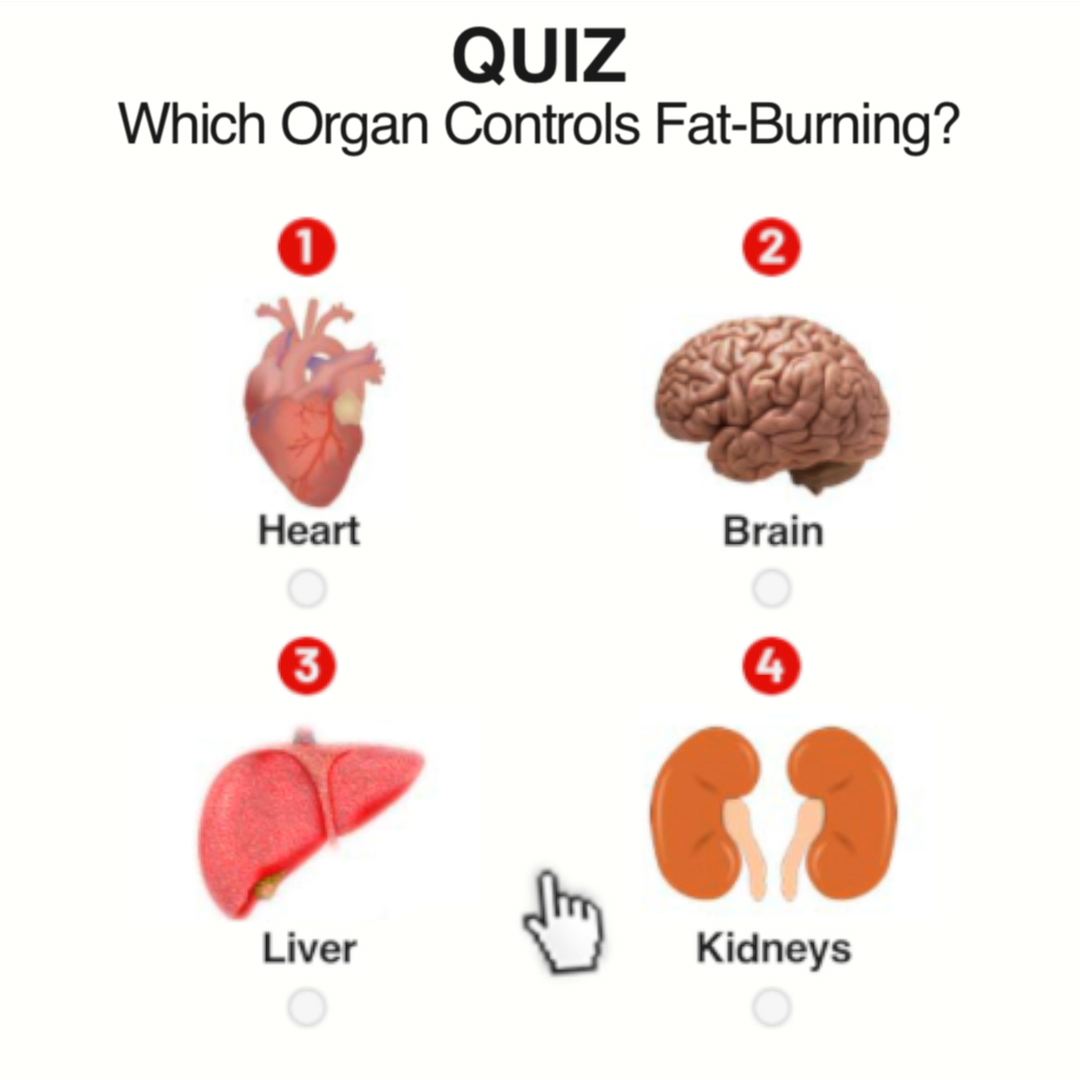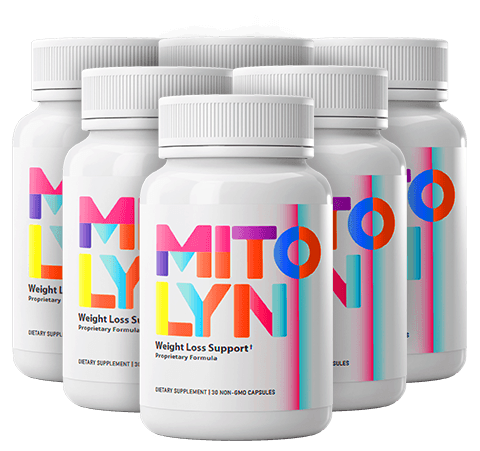I never thought my routine check-up would show my blood sugar was too high. But there I was, looking at the numbers and realizing I was part of 38.4 million Americans with high levels. The truth about blood sugar is more than just numbers. It’s a warning for millions of us facing silent dangers.
Blood sugar facts are often hidden but the risks are real. These risks include heart disease, vision loss, and even life-threatening problems.
Key Takeaways
- 38.4 million people in the U.S. have elevated blood sugar, putting them at risk of severe health issues.
- Type 1 diabetes stems from autoimmune issues, while Type 2 often ties to lifestyle factors like obesity.
- Subtle symptoms of Type 2 diabetes can go unnoticed for years, delaying critical care.
- High blood sugar raises the risk of heart disease, stroke, and other life-threatening conditions.
- Type 2 diabetes can be reversed through diet, exercise, and medical interventions.
The Alarming Statistics That Changed How I View Blood Sugar
When I first saw the numbers, I realized blood sugar levels weren’t just a concern for those with diabetes—they’re a red flag for everyone. Understanding blood sugar isn’t just about medical reports; it’s about survival.
Why These Numbers Should Matter to Everyone
Here’s the truth: 38.4 million Americans now live with diabetes. That’s 1 in 10 people. But the bigger threat? Half of adults over 30 have prediabetes. Even “healthy” lifestyles aren’t immune. High blood sugar quietly damages hearts, kidneys, and nerves long before a diagnosis hits.
- Diabetes costs the U.S. $412.9 billion annually
- 11% of cardiovascular deaths link to high blood sugar
- Over 8 million Americans with diabetes don’t even know it
The Growing Epidemic Nobody’s Talking About
Numbers don’t lie. In 1990, 200 million globally had diabetes. By 2022? That tripled to 830 million. In the U.S., 97.6 million adults now have prediabetes—nearly 40% of adults. Yet most conversations skip this crisis.
| Year | Diabetes Cases (Millions) |
| 1990 | 200 |
| 2022 | 830 |
How I Discovered I Was Part of the Statistics
I was 35, active, and shocked when a routine checkup flagged my blood sugar. My story mirrors the data: 59% of adults with diabetes aren’t on meds. Ignoring symptoms like fatigue or frequent thirst? That’s a gamble. My wake-up call? A fasting blood sugar reading over 126 mg/dL—diabetes territory.
What Blood Sugar Actually Is and Why It Matters
Blood sugar is the sugar (glucose) in your blood. It’s your body’s main energy source. Think of it like fuel for your brain, muscles, and organs.
When you eat, food breaks down into glucose. This glucose enters your bloodstream. Insulin, a hormone, acts like a key. It unlocks cells to let glucose in for energy.
Without enough insulin or if cells resist it, glucose stays in the blood. This can lead to diabetes over time.
Blood sugar facts show healthy levels matter for everyone. For those with diabetes, targets are 80–130 mg/dL before meals. They should be under 180 mg/dL two hours after eating.
Even without a diagnosis, keeping these levels stable is important. It helps prevent fatigue, brain fog, and long-term risks like heart disease. I realized ignoring these basics meant I’d missed early warning signs for years.
- High blood sugar (hyperglycemia): Thirst, fatigue, headaches, frequent urination, blurry vision
- Low blood sugar (hypoglycemia): Shaking, sweating, nervousness, irritability, dizziness, hunger
Monitoring is key. Blood glucose meters give instant readings via finger pricks. Continuous glucose monitors (CGMs) track levels 24/7.
Both tools help spot trends, but neither works well without proper use. The American Diabetes Association emphasizes checking before meals and after eating. I now use a CGM to track my patterns daily—it’s changed how I eat and exercise.
Every choice affects these numbers. Learning these basics isn’t just for those with diabetes—it’s about prevention. Knowing your body’s signals and how to respond is the first step toward taking control.
The Shocking Truth About Blood Sugar Levels in America
When I found out the truth about blood sugar, I saw a big problem. Most Americans are in danger without knowing it. Let’s look at the facts that are right in front of us.
The Dangerous Threshold Most Americans Don’t Know
Normal fasting blood sugar levels should be under 100 mg/dL. But 1 in 3 adults in the U.S. already have levels between 100-125 mg/dL. Levels over 126 mg/dL mean you have diabetes. But, blood sugar levels are often ignored until it’s too late.
How Our Modern Diet Creates a Perfect Storm
Processed foods are everywhere, and sugar is the hidden enemy. Here’s how the crisis starts:
- 70% of packaged foods have hidden sugars under 61+ names like “dextrose” or “cane syrup”
- Liquid sugar (sodas, energy drinks) make up half our added sugar intake
- Our brains want more sugar after each soda sip because of dopamine spikes
The Surprising Foods Affecting Your Blood Sugar
These “healthy” options might be your worst enemy:
| Food | Hidden Sugar (per serving) |
| Flavored yogurt | 24g |
| Store-bought smoothies | 35g |
| Barbecue sauce | 15g per 2 tbsp |
I was shocked to find my “healthy” protein bar had more sugar than a candy bar. Learning these numbers is a wake-up call.
Hidden Risks You Might Be Facing Right Now
When I learned about blood sugar facts, I was shocked. The truth about blood sugar is more than just diabetes. It’s a danger to almost every part of your body. Even before you’re diagnosed with prediabetes, damage can start.
- Heart health: High blood sugar can harm blood vessels. This increases the risk of stroke and heart attacks. Glycation, or sugar sticking to proteins, makes this worse.
- Brain health: AGEs, or advanced glycation end-products, build up in the brain. They’re linked to Alzheimer’s. Sugar spikes harm your brain, not just your blood sugar levels.
- Skin and vision: Glycation damages collagen, causing wrinkles. It also makes eye lenses cloudy, leading to cataracts. This isn’t just aging; it’s sugar damage.
- Kidneys and nerves: Too much sugar can scar kidney filters and numb nerves. Nerve damage can even lead to amputations. I’ve seen this happen too many times.
These risks don’t wait for a diabetes diagnosis. My own prediabetes numbers scared me. It wasn’t just about numbers; it was about my body’s future. The truth about blood sugar is more than lab results. It’s about protecting your organs. Making small changes now can prevent a lot of harm.
Common Blood Sugar Myths I Once Believed
Learning about blood sugar facts changed everything. I found out that “sugar-free” doesn’t always mean safe. Over 30 million Americans have diabetes, but many still believe old myths.
Why “Sugar-Free” Products Aren’t Always Better
I thought “sugar-free” meant healthy. But, hidden sugars like maltose or high fructose corn syrup can still raise blood sugar. Even “sugar-free” snacks might have bad fats or artificial sweeteners. Understanding blood sugar means looking beyond labels.
- Hidden sugar aliases: dextrose, invert sugar
- Artificial sweeteners like sucralose
- Check for fats: Many products have 20%+ calories from unhealthy oils
The Fruit Misconception That’s Harming Your Health
“Fruits are natural, but portions matter,” says the ADA. I once avoided apples and bananas, then learned berries and citrus are better options. Tropical fruits like mangoes or dried fruit concentrates can spike levels fast. Pairing with protein helps balance.
Whole fruit is better than juice—fiber slows down sugar absorption. Even natural sugars need careful eating.
Breaking Down the “Diabetes Runs in My Family” Excuse
Genetics aren’t the only risk. My family has no history, yet lifestyle choices matter more. Age over 45, stress, and sleep patterns also impact glucose control. Medications like Ozempic help manage levels, but they don’t replace lifestyle changes.
- Risk factors: Sleep deprivation, chronic stress
- Exercise lowers risk even without family history
These myths aren’t harmless—they delay action. The blood sugar facts show that knowledge isn’t just for those diagnosed. Small shifts in diet and awareness make a difference.
Warning Signs Your Body Is Screaming at You
Your body sends clear messages about blood sugar levels. Feeling tired after eating? Always thirsty? These are not just small issues. They are big warnings. Let’s look at the blood sugar facts you must know.
- Extreme thirst or dry mouth
- Frequent urination, even waking at night
- Blurred vision or slow-healing cuts
- Unexplained weight loss
- Irritability or mood swings
Low blood sugar (
Feeling a sudden crash after skipping meals is a clear sign. But, feeling tired all the time is often ignored. Don’t wait for things to get worse. Your body is trying to tell you something. Listen before it’s too late.
How I Discovered My Own Blood Sugar Issues
My journey started with small clues my body sent for years. I felt tired all the time. I had cravings that never ended.
I thought it was stress, bad sleep, or getting older. But ignoring these signs almost ruined my health.
The Symptoms I Ignored for Years
- Constant thirst I wrote off as “just hot weather”
- Mood swings I blamed on work stress
- Unexplained weight changes I dismissed as metabolism shifts
These signs were my body’s way of saying “help!” Studies show 90% of people with prediabetes miss these signs. They hide the early signs until it’s too late.
My Wake-Up Call Moment
It happened during a routine checkup. My A1C was 7.2%, close to prediabetes. My doctor showed me my blood sugar after meals.
It was spiking to 200+ after meals I thought were healthy. That moment made me realize why blood sugar monitoring is crucial—it’s about survival.
What My Doctor Told Me That Changed Everything
“Your body isn’t broken—it’s screaming for help. But it’s never too late to reverse this,” she said.
My doctor told me to track my meals with a continuous glucose monitor (CGM). It showed how foods like yogurt and bananas raised my blood sugar. I learned my body reacts strongly to carbs.
Now, I manage my blood sugar by adjusting when and how much I eat. What I learned: Early blood sugar monitoring could have saved me years of health problems. I now push for testing before symptoms appear.
The Silent Damage Happening Inside Your Body
I learned the truth about blood sugar the hard way. High blood sugar levels quietly harm your body before you even notice. Every year, over 1.4 million people get diagnosed with diabetes. But the real danger is what happens before they get diagnosed.
“The damage begins years before visible symptoms.”
High glucose quietly harms your heart, kidneys, and eyes. It forms AGEs (advanced glycation endproducts) by sticking to proteins in your blood. This stiffens blood vessels and damages nerves.
Even small increases can hurt your kidneys and blur your vision. My research found that 1 in 10 Americans are at risk without knowing it.
- Heart arteries clog as sugar triggers inflammation
- Kidneys strain to filter excess glucose, leading to disease
- Eye blood vessels swell, risking blindness
- Brain cells starve, causing foggy thinking
The HbA1c test shows hidden damage by measuring average sugar levels over 3 months. My doctor said glycation—sugar sticking to red blood cells—shows the truth early. Waiting for obvious signs can cause permanent damage.
Early action can stop strokes, amputations, and organ failure. Understanding this silent war inside my body changed my life. Small steps today protect your future. Don’t wait for pain—act now.
Revolutionary Approaches to Blood Sugar Management
Managing blood sugar isn’t just about counting carbs anymore. New strategies are here to help. Let’s explore what works and what doesn’t.
Move Smart, Not Just Hard
Exercise isn’t one-size-fits-all. My own journey taught me that mixing these three types makes a real difference:
- Resistance training: Builds muscle to burn glucose better.
- High-intensity intervals (HIIT): Short bursts of activity boost insulin sensitivity.
- Post-meal walks: A 15-minute walk after eating can drop blood sugar by up to 22% in some cases.
Sleep and Stress: The Silent Partners
High stress spikes cortisol, which can raise blood sugar levels overnight. My nightly routine now includes:
- Meditation to lower cortisol
- 7 hours of sleep to keep insulin sensitivity high
Science shows even one bad night’s sleep can weaken blood sugar control. Wearable tech like continuous glucose monitors now track these patterns in real time.
Supplements That Work (and Don’t)
Don’t waste money on trendy pills. Here’s what research supports:
Effective picks:
- Berberine (backed by 14 human studies)
- Chromium picolinate for insulin support
Skip these:
- Cinnamon (studies show no significant impact)
- Vanadium (too inconsistent in trials)
Pairing these strategies with personalized medicine—like genetic testing for risk factors—can tailor your plan. The future is here, and it’s time to use it.
My Personal Strategy for Maintaining Healthy Blood Sugar Levels
Managing blood sugar isn’t about being perfect—it’s about being consistent. Here’s how I keep my levels stable without feeling deprived:
- Meal Timing & Portions: I eat on a schedule, never skipping breakfast. My meals are balanced: half veggies, a quarter protein, and a quarter whole grains like quinoa or brown rice.
- Exercise Routine: I walk briskly for 30 minutes every day and lift weights twice a week. Exercise helps my body use insulin better and keeps levels steady.
- Sleep & Stress: I try to sleep for 7 hours and meditate for 10 minutes in the morning. Reducing stress keeps cortisol low, which prevents sugar spikes.
- Monitoring: I check my glucose levels 2-3 times a week. A1C tests every 6 months track long-term trends.
Small choices matter most. I keep snacks like almonds or carrots handy to avoid crashes. If I eat dessert, I pair it with protein to slow sugar absorption.
My rule? Balance. No guilt over occasional treats—just adjust other habits the next day. Healthy blood sugar levels are a journey, not a finish line.
The Future of Blood Sugar Monitoring and What It Means for You
Imagine a world where managing your blood sugar is as simple as checking a phone app. That future is closer than you think. Let’s explore how technology and medicine are rewriting the rules of blood sugar monitoring and blood sugar control.
Game-Changing Technologies on the Horizon
Recent breakthroughs are revolutionizing daily care. Here’s what’s next:
- Continuous Glucose Monitors (CGMs): Devices like the Dexcom G7 and FreeStyle Libre 3 offer real-time data with no finger pricks.
- Smart Insulin Pens: Tandem’s t:connect and Medtronic’s Guardian Sensor automate dosing and tracking.
- Non-Invasive Options: Sensors like the sugarBEAT and K’Watch are FDA-approved, pain-free alternatives.
- Artificial Pancreas Systems: Hybrid closed-loop systems, like the Medtronic 780G, adjust insulin automatically.
How Personalized Medicine Is Transforming Blood Sugar Management
One-size-fits-all plans are fading. Now, treatments target your unique biology. Compare old vs. new approaches:
| Traditional Approach | Personalized Medicine |
| Generic meal plans and insulin doses | Genetic testing to tailor medication |
| Monthly doctor visits | Real-time data sharing with healthcare teams |
| Same advice for everyone | Lifestyle plans based on microbiome analysis |
What I Wish I’d Known a Decade Ago
“The best blood sugar control starts with understanding your unique biology.”
Back then, I relied on old methods—counting carbs blindly, ignoring stress effects. Now, I track with a Dexcom G6, which alerts me before levels spike. My doctor uses my microbiome data to adjust meds. This personalized path works better than generic advice.
Stay open to new tech. Pair it with sleep, stress, and diet tweaks. The future isn’t just about gadgets—it’s about combining science with your unique story.
Conclusion: Taking Control of Your Blood Sugar Destiny
Managing blood sugar is more than just avoiding sugar. It’s about living a balanced life. Regular exercise, mindful eating, and reducing stress helped me beat insulin resistance. Small, consistent changes can make a big difference.
Choosing whole foods, staying active, and getting enough sleep are key. These habits help keep blood sugar levels healthy. They also prevent serious health problems later on.
Begin with easy steps like drinking water instead of sugary drinks. Try walking for 30 minutes each day. Or, check your A1C levels regularly. The PILAF framework can guide you.
Even small changes, like eating nuts or berries instead of junk food, help. Early diagnosis is crucial for those at risk. Healthy blood sugar levels mean feeling full of energy and in control.
Your health is a journey, not a destination. Every choice you make matters. Start with a simple walk or a kitchen makeover. Focus on blood sugar management today for a healthier tomorrow.
Healthy blood sugar levels are not just possible; they’re within reach. Your body will thank you for every step you take towards better health.
FAQ
What is blood sugar, and why is it important to monitor?
Blood sugar is the sugar in your blood, important for energy. It’s key to keep it healthy to avoid serious diseases like diabetes and heart problems.
What are healthy blood sugar levels?
Healthy levels are 70 to 99 mg/dL when fasting. After eating, they should be under 140 mg/dL. Higher levels might mean you have prediabetes or diabetes.
How can I manage my blood sugar effectively?
To manage it, eat healthy, stay active, manage stress, and sleep well. Keep track of your food’s impact on your levels.
Are snacks important for blood sugar control?
Yes, snacks help keep your blood sugar stable. Choose ones with protein, fiber, and healthy fats for best results.
What role does exercise play in blood sugar management?
Exercise makes your body better at using sugar. It lowers blood sugar and cuts diabetes risk.
How do I know if my blood sugar levels are too high?
High levels cause thirst, frequent urination, fatigue, and blurred vision. If you see these signs, see a doctor for a test.
Can stress affect my blood sugar levels?
Yes, stress can upset hormone balances, affecting sugar levels. Stress management like mindfulness or yoga helps keep levels stable.
Do I need to avoid all carbohydrates to maintain healthy blood sugar?
Not all carbs are bad. Focus on whole, unprocessed carbs like fruits, veggies, and whole grains. They help regulate sugar levels.
What are some common misconceptions about blood sugar management?
Some myths say “sugar-free” foods are safe or all fruits are healthy. It’s key to know how foods affect you and look at your diet overall.
How can I tell if I’m at risk for blood sugar problems?
Risk factors include being overweight, not being active, family diabetes history, high blood pressure, and cholesterol. Regular tests can show your risk.

















